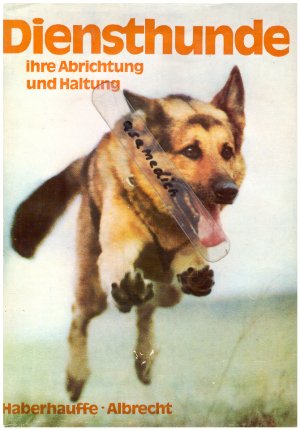Wertmessziffern

In the early 1950s, Metrics of Value for Service Dogs (Wertmessziffern) were introduced into Cynology in the DDR. The pacemaker was the Special Breeding Association for German Shepherd Dogs. This system was also used for other dog breeds, but in a modified form, analogously to the measured values of this special breeding association.
The introduction of the scores can be seen as a progressive measure, as they proved particularly valuable for breeding. Through the value measure digits, which indicate Size, Performance Structure, Physique, Character, Sharpness and Hardness- uniform evaluation criteria were created. On the basis of these criteria one strives to make clear statements about the condition of a dog. This six-digit number expression goes into the papers (pedigree, licensing certificate, etc.) of the respective dog and hardness are from 1 to 5. Coincidences can be avoided more and more with this method and the breeder can work with foresight. The first four values are in the sequence from 0 to 9, with 5 being the most valuable in terms of breeding. The fifth and sixth value after the slash, which, as a value judgment for sharpness and hardness run from 1 to 5. 5 should also be the number to strive for here. Anything that deviates from the criteria of number 5 is considered a spread in breeding.
However, one must be aware that the number 5 does not always have to be the ideal number or the most valuable value measurement number. For example, using a dog with a temperament index of 5 as a guard dog would be a mistake. Here would be for values 2 to 4, which indicate distrust and aggressiveness, are much better suited. The same applies to the physical condition of the dog. A dog with the number 6 in the Performance Structure can be very well suited. Its powerful appearance gives it a good effect. As a guard dog, the massive physique would have a negative effect on working behavior. Here one can imagine that slightly lighter dogs, which correspond to the number 4 in format, can be expected to run longer. These examples are intended to show that every digit or combination of digits can have advantages and disadvantages. The selection of a dog is therefore always to be determined according to the intended use.
Of course, the measured values that are assigned at licensing or breeding suitability tests can only express the current performance or the currently existing physical condition. That is why the values are never constant. The dog is subject to various changes as a result of the adaptation process. Deficiencies in development over time, illnesses, improper husbandry etc. can be the causes of these changes. As a rule, these changes do not happen overnight, so that a combination of measured values can be valid for years. In addition, the dogs presented for breeding are already fully grown and their nervous type is already relatively different have strengthened.
It has become common practice to distinguish between “left” and “right” when using the figure for the essence. The expert understands by “left lying” (number 0 to 4) that these are suspicious, reserved or aggressive dogs. Benign, balanced animals, on the other hand, embody the right side. Much discussion has taken place on the basis of the metrics as to which dogs should be classified as strong nerved or weak nerved. Here one must first establish that the numerical values are not identical with the types of higher nervous activity. Both are two fundamentally different things.
With the character value measurement numbers and the numbers of sharpness and hardness, only a performance profile is characterized, which is based on certain criteria, in particular the protection service. On the basis of such criteria, which have proven themselves in practice, dogs with positive behavioral traits and animals with undesirable ones (fearful, etc.) can be distinguished. With high probability one is able to exclude nervously weak animals from breeding. Nevertheless, be warned against applying this method in a schematic way or overemphasizing it. As mentioned, the awarding of personality ratings is mainly based on protection service criteria. During biting work, however, the unresponsive gets very excited, just like the lively. Here the unresponsive can appear as a very lively and agile dog. On the other hand, it would hardly be possible to recognize the type from certain behavioral characteristics. This is not intended by the value meter system.
The desire to exclude unresponsive dogs from breeding is to be welcomed, but the limits of the system are recognizable here. Dogs with a temperament value of 5 or 6 or more can be both lively and unresponsive. It can be more blatant with the character value measurement number 3, where the spread is quite large and accordingly all types of higher nervous activity – with the possible exception of the weak type – are recorded.
The combination of numbers is read in such a way that each digit has its own meaning. In addition to its usefulness in sport and breeding, this system is also important for state bodies. Dogs with a personality rating of 3/55 to 7/33 can be suitable protection dogs for service in State bodies. If dogs of this classification are sold, they are usually also fit in terms of Character. A deficiency can be the mostly insufficient natural aggressiveness of the animals. Although dogs of this type have a value of 3 and above for the sharpness characteristic, the dog’s natural aggressiveness (lack of the usual chasing arm) may not be sufficiently developed, but it may be the aptitude. In such cases, the score for sharpness only reflects the dog’s attitude towards the baited matter and not the aggressiveness that is meant by the term sharpness. Although the measured values are a good guide to the physical condition and possible psychological characteristics of the dog, they cannot replace the aptitude test for the dog’s fitness for service in the State.

Done
All reactions:
1010